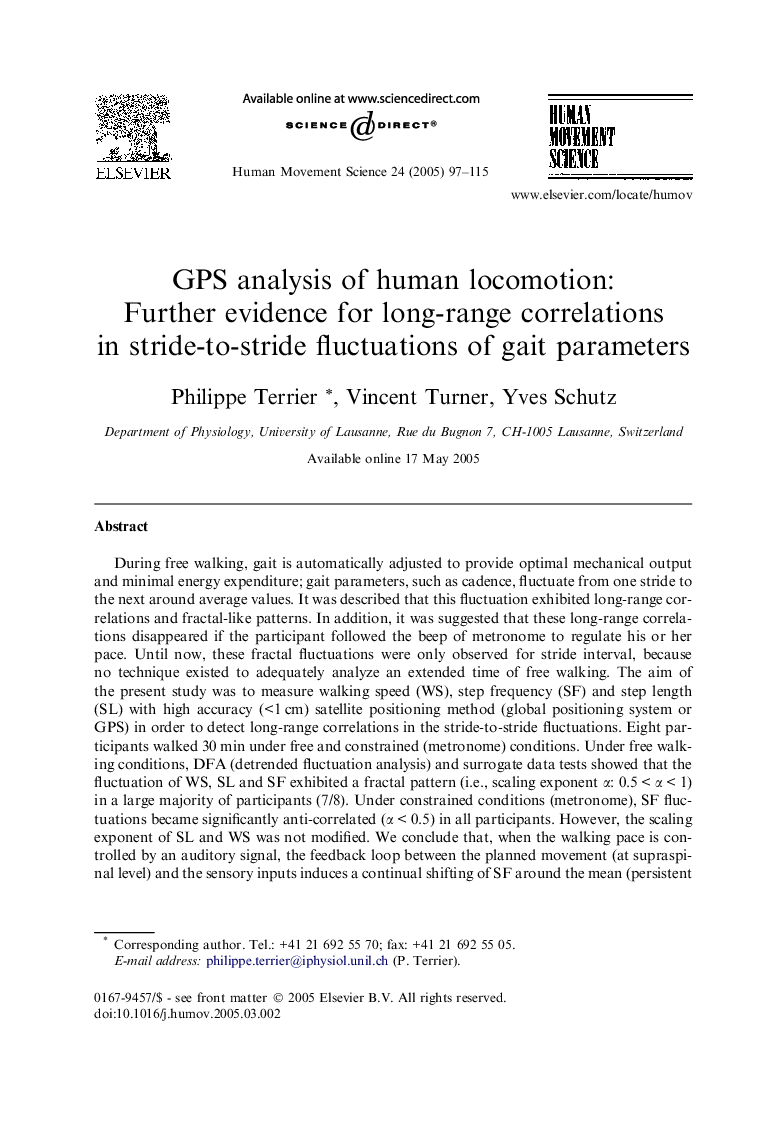| Article ID | Journal | Published Year | Pages | File Type |
|---|---|---|---|---|
| 10459352 | Human Movement Science | 2005 | 19 Pages |
Abstract
During free walking, gait is automatically adjusted to provide optimal mechanical output and minimal energy expenditure; gait parameters, such as cadence, fluctuate from one stride to the next around average values. It was described that this fluctuation exhibited long-range correlations and fractal-like patterns. In addition, it was suggested that these long-range correlations disappeared if the participant followed the beep of metronome to regulate his or her pace. Until now, these fractal fluctuations were only observed for stride interval, because no technique existed to adequately analyze an extended time of free walking. The aim of the present study was to measure walking speed (WS), step frequency (SF) and step length (SL) with high accuracy (<1 cm) satellite positioning method (global positioning system or GPS) in order to detect long-range correlations in the stride-to-stride fluctuations. Eight participants walked 30 min under free and constrained (metronome) conditions. Under free walking conditions, DFA (detrended fluctuation analysis) and surrogate data tests showed that the fluctuation of WS, SL and SF exhibited a fractal pattern (i.e., scaling exponent α: 0.5 < α < 1) in a large majority of participants (7/8). Under constrained conditions (metronome), SF fluctuations became significantly anti-correlated (α < 0.5) in all participants. However, the scaling exponent of SL and WS was not modified. We conclude that, when the walking pace is controlled by an auditory signal, the feedback loop between the planned movement (at supraspinal level) and the sensory inputs induces a continual shifting of SF around the mean (persistent anti-correlation), but with no effect on the fluctuation dynamics of the other parameters (SL, WS).
Related Topics
Life Sciences
Neuroscience
Cognitive Neuroscience
Authors
Philippe Terrier, Vincent Turner, Yves Schutz,
